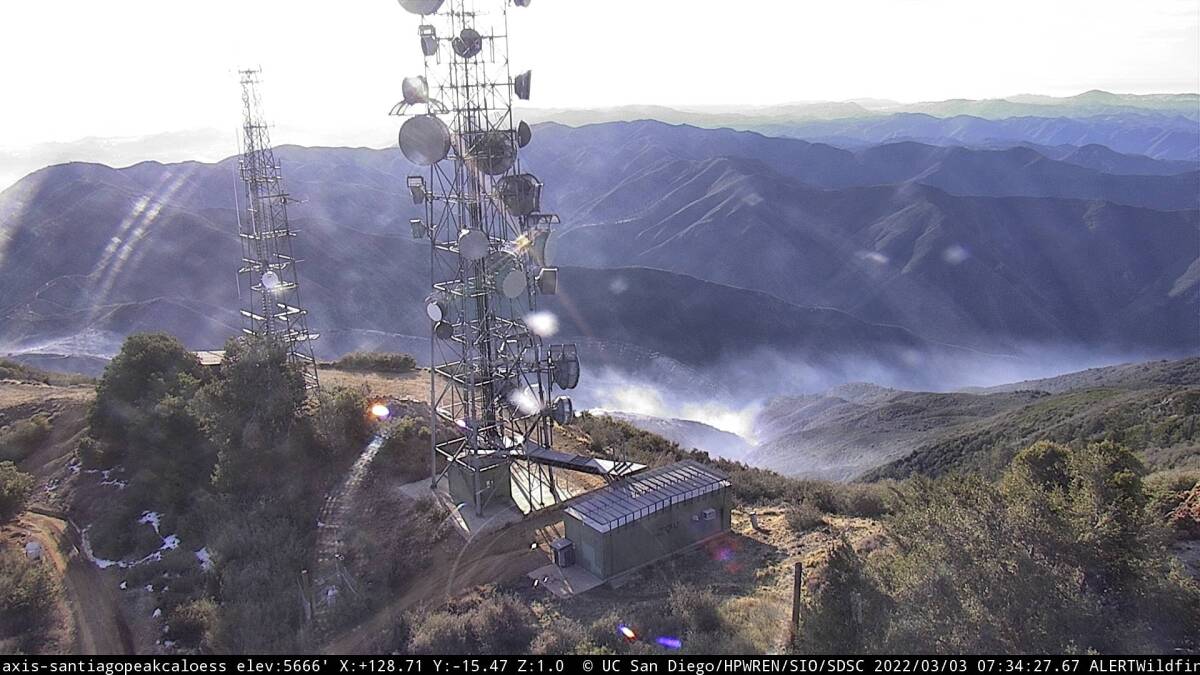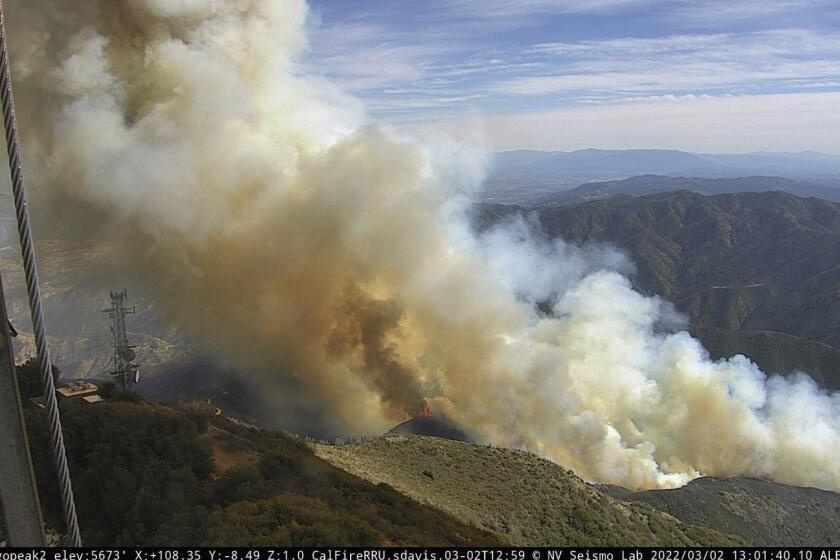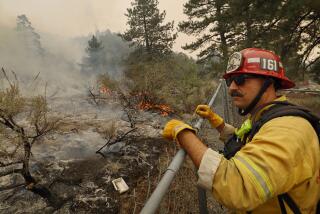Another blaze ignites in Orange County as Jim fire tops 550 acres

A second wildfire ignited Thursday in the Cleveland National Forest, where crews were already working to control the Jim fire burning near the Riverside-Orange County line.
The San Juan fire sparked around 12:15 p.m. off State Route 74 near Sievers Canyon and grew to an estimated 9 acres before forward progress was stopped, officials said. Containment was at 90% as of Thursday evening.
The two fires were feeding on sunbaked vegetation that has seen little rain since the start of the year and could offer a grim preview of what the 2022 wildfire season may have in store.
“It just shows you right there how dry the fuels are in some areas,” Cleveland National Forest spokesman Nathan Judy said.
The Jim fire ignited around 11:20 a.m. Wednesday in the Holy Jim Canyon area of the forest and quickly spread uphill, exploding from 10 to 400 acres in its first three hours.
As of Thursday afternoon, the blaze had burned 553 acres and was 50% contained. Judy said the fire “wasn’t active” Thursday and that crews’ work on that blaze was a matter of “putting out hot spots.”
The vast majority of the fire was burning in Orange County, but some upper portions had crossed the border into Riverside County, Judy said. No homes were threatened and no evacuations had been ordered.
The fire that began near the Holy Jim Trail sent up a plume of smoke that could be seen across Southern California.
Roughly 250 personnel — including crews from the U.S. Forest Service, the Orange County Fire Authority and the California Department of Forestry and Fire Protection — were attacking the fires from the air and ground, Judy said.
“We broke off some crews from the Jim fire to go assist with [the San Juan fire], and now that that one’s getting wrapped up they’ll send them back to the Jim,” he said.
The Jim fire had encroached on the burn scar of the 2018 Holy fire, which helped slow its spread along with aerial water and retardant drops, he said.
The arson-sparked Holy fire consumed more than 23,000 acres and destroyed 18 buildings.
Firefighters on the ground were having to hike through steep, chaparral-studded terrain to reach the front lines of the flames, Judy said.
The two blazes could spell trouble for the fire season ahead. A record-dry start to the year in California, coupled with extreme temperature swings, is priming the landscape to burn.
“Nowadays, it’s year-round fire season here in Southern California,” Judy said, noting that crews have already battled several unseasonably early wildfires this year, including the 154-acre Emerald fire near Laguna Beach and the Sycamore fire near Whittier, which burned only 7 acres but destroyed two homes.
“Not just the Forest Service, but all agencies are having fires in California — it doesn’t matter what time of year it is,” Judy said. “If the fuel is receptive, which it is, it just takes one spark to start a wildfire.”
Though January and February are typically the heart of the wet season in California, the two-month stretch this year was the driest ever recorded in most of California.
What’s more, parts of Orange County in recent days have experienced record-breaking heat, including 90 degrees in Anaheim on Monday, when the city was the hottest place in the nation, and again Tuesday.
Crews were banking on an incoming cool weather system to help quell the Jim fire Thursday into Friday.
The National Weather Service said the system moving in from the Gulf of Alaska could lower temperatures significantly and offer the chance of rain and mountain snow.
The causes of both fires remain under investigation, Judy said.
Times staff writer Andrew J. Campa contributed to this report.
More to Read
Sign up for Essential California
The most important California stories and recommendations in your inbox every morning.
You may occasionally receive promotional content from the Los Angeles Times.












